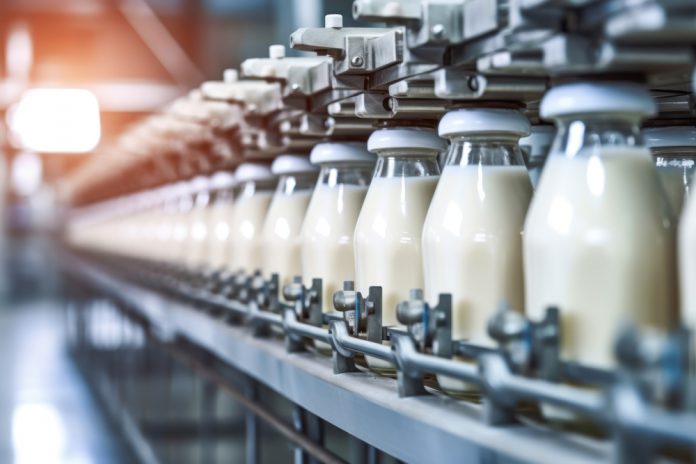Australia’s dairy import and export mix is “slowly trading places” – with export volumes falling sharply in recent years while imports have spiked, specialist agribusiness bank Rabobank says in a newly-released report.
In its ‘Australian Dairy Sector Outlook: Slowing trading places’ report, Rabobank says the overall trade profile for Australian dairy is in a period of transition – “driven by a confluence of factors, including lower domestic milk production, an erosion of export competitiveness and more favourable domestic market returns impacting the product mix”.
The bank expects dairy imports to “play a more significant role” in Australia’s domestic supply chain into the future with local milk production remaining constrained and as the industry further adjusts to accommodate these shortages.
And while dairy exports are under pressure, the report says, Australia still has a sustainable dairy export sector in the long term, albeit “more focussed on value-add rather then being volume driven, which means investment at manufacturing level is required”.

Report author, RaboResearch Senior Dairy Analyst Michael Harvey says Australia’s dairy trade mix in the future will primarily be influenced by milk availability cycles in both domestic and export markets, with the sector highly exposed to global markets and largely integrated into global supply chains.
Chronic shortage
The report says Australia produced 8.129 billion litres of milk in 2022/23, marking the “third consecutive year of decline” in milk production.
“Since the most recent production high in 2020/21, more than 700 million litres of milk have been lost from the supply chain,” Mr Harvey said, “resulting in a chronic shortage of milk for manufacturing – that is the total milk available outside what is used for domestic and export drinking milk.”
In fact, in 2022/23, the country’s milk supply available for manufacturing fell to its lowest level since the 1990s, he said.
Slow retreat
Australia has had a long history as an exporter of dairy products and has served as a “key procurement region for international buyers, due to its reputation for product quality, accessibility and innovation”.
However, Australia has been on a slow retreat from the global dairy export arena for some time.
“Dairy exports fell off a cliff in 2023,” Mr Harvey said. “For the calendar year 2023, dairy export volumes were down with double digits across most products, with the largest declines in liquid milk (down 41 per cent year on year) and butter (down 52 per cent).”
Despite the reduction in domestic milk production and export volumes, however, Australia remains a net exporter of dairy products in liquid milk equivalents and still ranks as the fifth-largest dairy exporter in the world, with four per cent of global trade.
And long term, Rabobank believes Australia has a sustainable dairy export sector.
“However, how the export sector performs will remain cyclical given its commodity nature and this will have some impact on farmgate pricing, both on the upside and the downside,” Mr Harvey said.
“And unless there is a transformational shift in the trend for domestic milk production, less milk supply and a modestly-expanding domestic market will mean Australia has less milk solids for export.
“We expect this will continue to force export market consolidation and intensify the need for a focus on value over volume, requiring investment from dairy companies in innovation and new technologies and partnerships with milk suppliers.”
Import spike
Dairy imports have played a crucial role in the Australian supply chain for a long time, the report says. But, over the decade between 2013 and 2023, the annual dairy import volume in liquid milk equivalent has doubled, Rabobank says.
The pace of growth in dairy imports has shifted gears in recent years, Mr Harvey said, with a broad-based lift in import volumes in 2022 and 2023.
“In 2023, Australia imported more than 1.4 billion litres of dairy product in liquid milk equivalents, excluding caseins,” Mr Harvey said.
“A large proportion of the import mix is bulk and ingredients – particularly butter and skim milk powder – as domestic manufacturing of these products has declined. But more imported dairy products are also appearing on retail market shelves.”
The bank expects dairy imports to grow even further over the medium term – driven not just by shrinking Australian milk production, but also the comparative cost advantage of imported product (due to lower overseas dairy prices) and also a spike in demand for lower-budget dairy products among Australian consumers due to cost of living pressures.
Not all doom and gloom
That said, Australia has a secure availability of local-origin dairy product, Mr Harvey said. “And with ongoing support from retailers to source locally where possible, Australian-origin dairy products will remain readily available to consumers, though at times the pricing point for local product may trigger ‘sticker shock’ for consumers,” he said.
“The integration of imported milk solids will largely expand behind the scenes in foodservice and food manufacturing and out of sight for Australian consumers. More cost-effective imported ingredients can be a good thing for consumers, as it reduces food manufacturers’ raw material costs and keeps consumer prices for packaged foods with dairy ingredients more affordable.”





